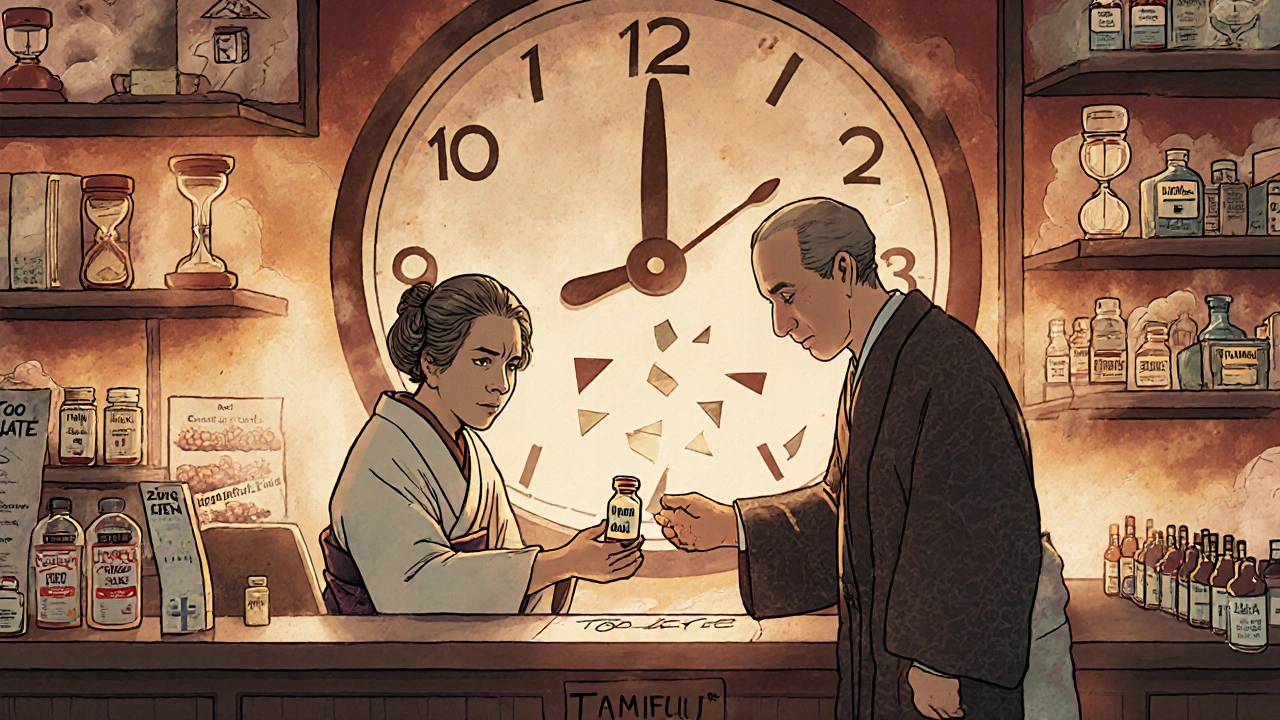
Most people think a runny nose and sore throat mean they’ve caught a cold. But what if it’s the flu? The difference isn’t just about how bad you feel-it’s about whether you could end up in the hospital, or worse. Every year in the UK, thousands of people mistake flu for a bad cold and delay treatment. By the time they realize it’s serious, it’s often too late for antivirals to help. This isn’t just about feeling miserable. It’s about knowing when to act, and when not to waste time on treatments that won’t work.
What’s Really Causing Your Symptoms?
The common cold and influenza are both respiratory infections, but they come from completely different viruses. Colds are mostly caused by rhinoviruses, a group of over 160 virus strains that infect the upper airways. You might also catch it from coronaviruses, the same family as the virus that causes COVID-19, but not the same strain, or RSV, which hits young kids and older adults harder. These viruses spread easily through coughs, sneezes, or touching contaminated surfaces.Influenza, on the other hand, is caused only by influenza viruses, specifically types A, B, and C, with type A being the most dangerous and responsible for major outbreaks. Unlike colds, flu doesn’t just make you feel under the weather-it hits like a truck. The virus targets your lungs and triggers a strong immune response that leaves you drained.
How to Tell Them Apart
Here’s the real test: how fast did it come on?If your symptoms crept in over two or three days-stuffy nose, scratchy throat, maybe a low-grade fever-you’re likely dealing with a cold. You might be able to work from home, sip tea, and wait it out. Cold symptoms rarely go beyond 10 days, and most people bounce back without any treatment.
But if you woke up yesterday feeling fine, and today you’re shaking with chills, your body aches, your head pounds, and your fever is over 100°F (37.8°C)? That’s flu. Fever, a hallmark of flu, hits 85% of patients and often spikes to 102-104°F (38.9-40°C). Muscle pain, reported by 80% of flu cases, is so severe it feels like you’ve been hit by a bus. Fatigue, lasting up to three weeks in some cases, is something colds simply don’t cause.
Other red flags: chest tightness or a dry, hacking cough that won’t quit. These aren’t normal for colds. In flu, they’re common-and signs your lungs are under attack.
Complications: When a Cold Turns Dangerous
Most colds end with a sniffle and a sigh. But flu? It can turn deadly.Flu leads to pneumonia in 15-30% of people who end up hospitalized. That’s not rare-it’s expected in high-risk groups. People over 65, pregnant women, and those with weakened immune systems are at the highest risk. In the US alone, flu causes 12,000 to 52,000 deaths each year. In the UK, the NHS reports similar numbers, with winter months seeing the biggest spike.
Even if you’re young and healthy, flu can lead to complications like sinus infections, ear infections, or worsening asthma. One patient I spoke to-a 42-year-old teacher from Nottingham-waited three days before seeing a doctor. By then, she had developed bacterial pneumonia. She spent a week in hospital on IV antibiotics.
Colds rarely go this far. Less than 5% of colds lead to sinus infections, and only about 10% of children get ear infections from them. But if you’re still coughing after two weeks, or your fever comes back after seeming to break, that’s not a cold anymore. That’s something else.

Antivirals: What Works, and When
Here’s the hard truth: antivirals do nothing for the common cold. No pill, spray, or lozenge will stop a rhinovirus. Your body clears it on its own. But for flu, antivirals can be a game-changer-if you take them early.There are four FDA-approved antivirals for flu:
- Oseltamivir (Tamiflu), an oral pill taken twice daily for five days
- Zanamivir (Relenza), an inhaler used twice daily
- Peramivir (Rapivab), a single IV dose given in hospitals
- Baloxavir marboxil (Xofluza), a single oral dose that cuts viral load by 99% in 24 hours
They all work best if taken within 48 hours of symptoms starting. After that, their effectiveness drops sharply. A Cochrane Review found oseltamivir reduces flu duration by about 30 hours on average. That might not sound like much, but for someone with a heart condition or diabetes, those 30 hours can mean the difference between staying home and ending up in intensive care.
Cost-wise, generic oseltamivir runs $15-$30 without insurance. Brand-name Tamiflu? $100-$160. Xofluza is $150-$200 per dose. Many people skip it because of the price-but for high-risk patients, it’s worth it. One NHS clinic in Nottingham started offering free antiviral vouchers to over-65s and pregnant women in 2023. Their hospitalization rates for flu dropped 22% in the first season.
What About Zinc, Vitamins, and Home Remedies?
You’ll see ads for zinc lozenges, echinacea, vitamin C-you name it. Do they work?For colds, zinc lozenges (75mg/day) might shorten the illness by about 1.6 days, according to a Cochrane review. But they come with a nasty side effect: a metallic taste so bad that many people quit after day one. And if you use them for more than a week, you risk copper deficiency.
For flu? Zero benefit. No study has ever shown zinc, vitamin C, or garlic helps with influenza. They might make you feel better psychologically, but they won’t speed up recovery or prevent complications.
What actually helps? Rest. Hydration. Acetaminophen for fever and pain. Decongestants like pseudoephedrine can ease nasal stuffiness by 30-40%. But none of these treat the virus. Only antivirals do that-for flu.
What About Vaccines?
The flu vaccine isn’t perfect. In the 2022-2023 season, it was about 45% effective at preventing illness. That means you can still get the flu even if you’re vaccinated. But it reduces your risk of hospitalization by 40-60%, and cuts the chance of dying by up to 80% in older adults.This year’s vaccine covers four strains: H1N1, H3N2, and two B strains. It’s updated every year because flu viruses change fast. The CDC recommends everyone over 6 months get it by the end of October. Even if you get it in December, it still helps.
There’s no vaccine for the common cold. Too many strains. Too many mutations. Scientists have tried for decades. So far, nothing sticks.

When to See a Doctor
You don’t need to run to the clinic for a cold. But for flu, timing matters.Call your doctor or go to urgent care if:
- Your fever is above 102°F (38.9°C) and doesn’t break after 48 hours
- You’re having trouble breathing or feel chest pressure
- You’re dizzy, confused, or can’t keep fluids down
- You’re pregnant, over 65, or have a chronic illness like asthma, diabetes, or heart disease
Don’t wait for a test. If your symptoms match flu and you’re high-risk, ask for antivirals right away. Rapid tests give results in 15 minutes and are 95% accurate. Many pharmacies and urgent care clinics now offer them.
Why So Many People Get It Wrong
Doctors misdiagnose flu as a cold up to 40% of the time, especially early in the season. Patients do too. One study found symptom checklists only get it right 60-70% of the time. People think, “I’m not bedridden, so it’s just a cold.” But flu doesn’t always look like the worst-case scenario.Some patients have nausea or vomiting-something we used to think was just a stomach bug. Turns out, 45% of flu cases in 2022-2023 included gastrointestinal symptoms. That’s why you can’t rely on old assumptions.
And then there’s the cost barrier. People skip antivirals because they’re expensive. Others wait too long because they don’t know the 48-hour window is critical. One Reddit user wrote: “I waited three days. Got Tamiflu on day four. Felt worse for another week.” That’s the cost of delay.
What’s Next?
Scientists are working on a universal flu vaccine that could protect against all strains for years, not just one season. Early trials in primates show 70% cross-protection. Moderna’s mRNA flu vaccine is in Phase III trials and could be available by 2025.Meanwhile, antiviral resistance is rising. About 1.5% of H1N1 strains are now resistant to oseltamivir. That’s why having multiple options matters. Baloxavir is still effective against most strains, and it’s becoming more widely used.
Climate change is making flu season longer too. Since 2000, cold and flu seasons in the UK have extended by 12 days on average. That means more time to catch it-and more pressure on health services.
Bottom line: Know the difference. Act fast if it’s flu. Don’t waste time on cold remedies for something that needs antivirals. And get your flu shot every year. It’s not a guarantee-but it’s your best shot at staying out of the hospital.
Can you get the flu from the flu shot?
No. The flu vaccine contains either inactivated virus or just a piece of the virus-it can’t cause infection. Some people feel sore at the injection site, or get a mild fever or headache for a day. That’s your immune system responding, not the flu.
How long is someone contagious with the flu?
You can spread flu one day before symptoms start and up to 5-7 days after. Kids and people with weak immune systems can be contagious for even longer. That’s why staying home when you’re sick is so important.
Do antivirals work if you’ve had symptoms for more than 48 hours?
They’re less effective, but still helpful for high-risk patients. If you’re over 65, pregnant, or have asthma or diabetes, doctors may still prescribe antivirals even after 48 hours to reduce the risk of pneumonia or hospitalization.
Is it safe to take antivirals if I’m not sure it’s the flu?
Yes, if you’re high-risk and symptoms match. Antivirals are safe for most people. Side effects like nausea or headaches are mild and uncommon. The risk of not treating flu in vulnerable people far outweighs the risk of taking the medicine.
Why can’t we make a cure for the common cold?
There are over 160 different rhinovirus strains, and they mutate quickly. A vaccine or antiviral would need to target them all-and so far, that’s impossible. Your immune system handles colds on its own, so drug companies haven’t prioritized a cure. Focus is on flu, where the stakes are higher.



2 Comments
Flu? More like a government bioweapon disguised as a virus. They want you scared so you buy Tamiflu and get vaccinated. Who benefits? Big Pharma. Who pays? You. And don’t tell me about 'clinical trials'-I’ve seen the patents. The real cure? Saltwater gargles and staying off the grid. They don’t want you to know that.
Wait… so you’re telling me… the flu… is… *real*? And… it’s not… just… the government… using… mRNA… to… track… us… through… our… coughs…?!!?!! I’ve been reading… the… 2017… WHO… leaked… memo… on… subcutaneous… immune… modulation… via… respiratory… droplets… and… it… says… the… vaccine… is… a… Trojan… horse… for… microchips… embedded… in… the… lipid… nanoparticles… and… the… metallic… taste… from… zinc…? That’s… the… signal… receiver…!!